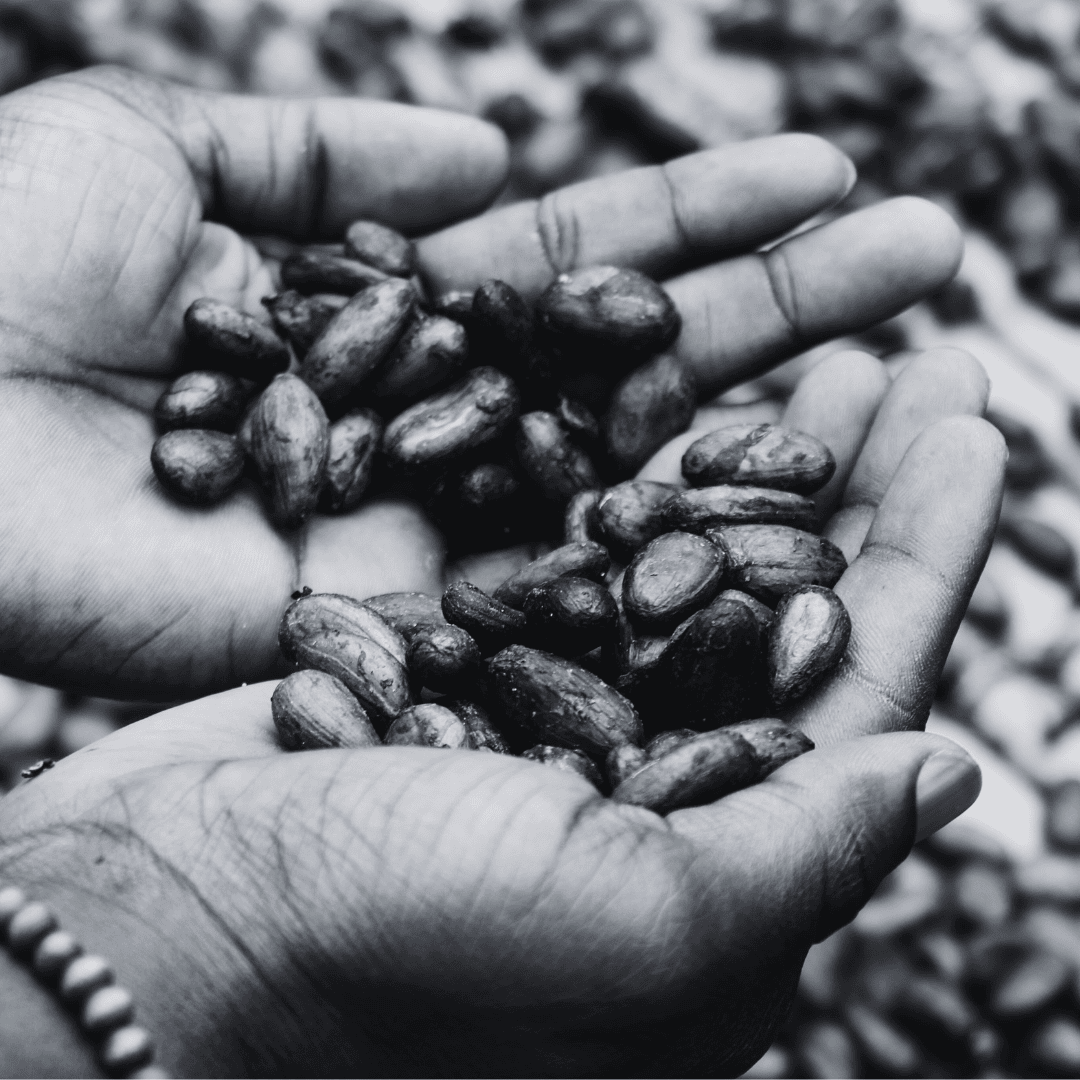Mass-Produced Chocolate’s Dark Secrets

Let’s face it, the vast majority of us love chocolate. We eat it to celebrate. We gift it to loved ones. And we also snack on it as a pick-me-up in the evening after a long day’s work. In fact, we adore chocolate so much that the global chocolate confectionery market is estimated to be worth more than $300 million (USD) by 2030; that’s a 66% increase since its previous valuation in 2021.
However, despite the staggeringly high figure above, all’s not as sweet as it seems when it comes to one of the world’s favourite indulgences.
Cocoa’s ethical & sustainability issues
Chocolate hides a dark secret. Mass-produced chocolate is riddled with ethical and sustainability issues. Think child and slave labour, as well as deforestation and massive CO2 emissions.
Cocoa – chocolate’s raw ingredient – grows along the equator in tropical rainforest. That’s why around 70% of the world’s cocoa comes from West Africa, specifically Ghana and the Ivory Coast. The industry has evolved over the centuries in both of these countries in a way that sees the supply chain dominated by European and US multinationals. This means that cocoa prices are kept relatively low and – with the world’s insatiable appetite for chocolate – manufacturers want to keep it that way. Not only is the land being exploited, but also the people who tend it.
Aside from Big Choc, smaller, independent companies that promise “slave-free chocolate” have brought more awareness to the ethical issues that plague the industry. The issue? Child and slave labour are so deeply entrenched in the economics of cocoa and chocolate that even one notable chocolatier had to take back its claims, and acknowledge child labour was occurring on the farms where it sourced its cocoa. Word is getting out, but very slowly and without much real change in the meantime.
When it comes to deforestation, Cote d’Ivoire has lost 94% of forest cover and Ghana 80%, which is directly linked to cocoa production. With cocoa crops being highly susceptible to the effects of climate change, disease, and producing lower yields, new, virgin land has to be cleared in order to be able to plant more cocoa trees. This is one of the main factors why chocolate production has an outsized CO2 footprint. In fact, 11 times more greenhouse gases are emitted by dark chocolate than cow’s milk.
Rising cocoa prices
At the time of writing, cocoa prices are the highest they’ve been since 1977. This is due to climate change affecting crops, disease, as well as poor harvests. Global warming is here and it’s already affecting chocolate production. With higher cocoa prices, stubbornly high inflation, and rising production costs, chocolate manufacturers are having to resort to measures such as shrinkflation to try to keep a handle on costs for consumers. Last year, Cadbury shrank the size of its Dairy Milk sharing bar from 200 grams to 180 grams, in order to keep the price the same for chocolate lovers. More recently, in September this year, Galaxy reduced its smooth milk chocolate bar by 10% in order to reduce its costs in the face of food inflation. We ask: how long could it be before our favourite sweet treat becomes a luxury?
Cocoa-free chocolate
WinWin is the world’s first cocoa-free chocolate on the market, having launched in 2022. We’re on a mission to help create a future where we enable change for the way mass-produced chocolate is produced. We want to create a system that’s better for the planet and its people.
We use cutting-edge technology and natural, sustainable and abundant ingredients that we source as close to home as possible: that’s East London! The process we harness to create our ‘choc’ is very similar to how conventional chocolate is made: you grow the cocoa pods, take the seeds out, ferment them, and then roast them, essentially we do the same thing. The key difference is that we start with hero ingredients that are not cocoa beans. By using these types of raw materials, we’ve been able to significantly reduce carbon emissions: by 80% compared to conventional chocolate production. And, because we use cereals and legumes that don’t require as much water as cocoa, which is an incredibly water-intensive crop, our production requires 90% less water than chocolate too.
The response we’ve had to our cocoa-free chocolate has been phenomenal. When people taste our choc, they’re taken aback that there’s no cocoa involved whatsoever. We’re now selling it as a competitively-priced ingredient to bakeries, restaurants, large companies and consumers who all want to sell the same great-tasting products, but with none of the sustainability and ethical concerns associated with conventional chocolate.
Find out more about our hero ingredients: